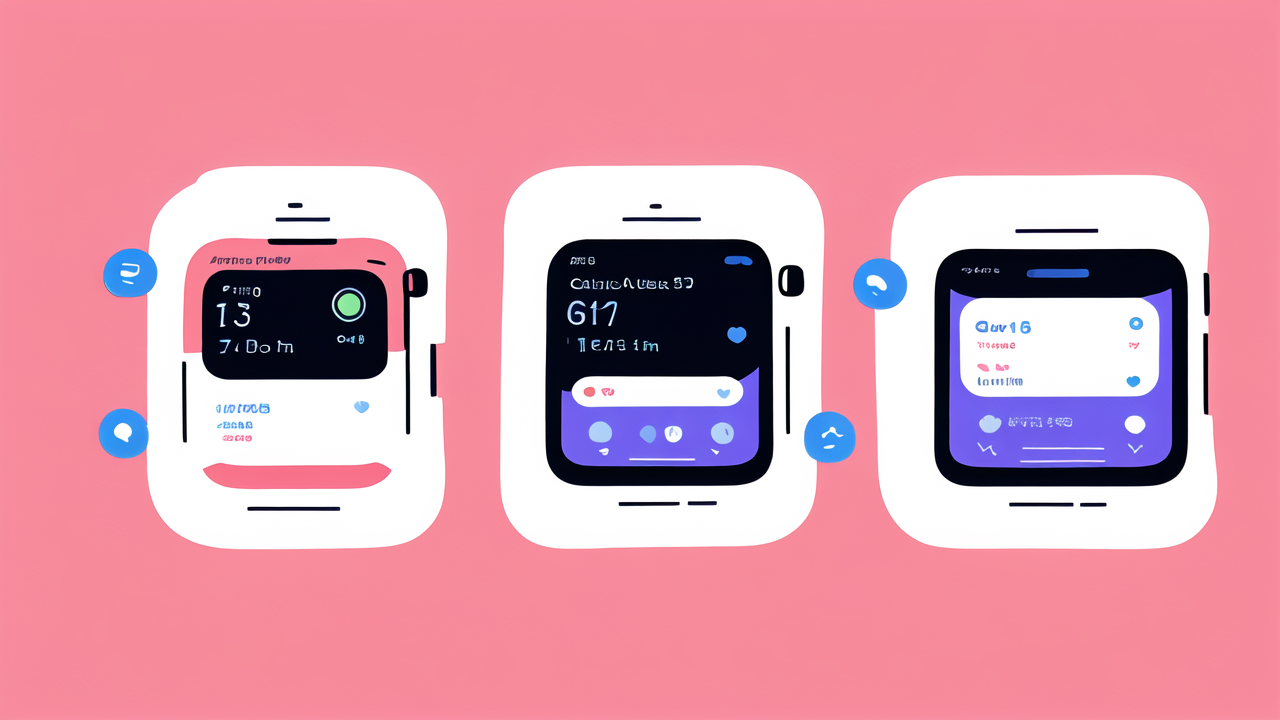Understanding the Role of Smartwatches in Modern Fitness Regimens
The Evolution of Wearable Fitness Technology
Wearable fitness tech has come a long way. It started with simple step counters. These devices tracked daily steps and nothing more. Now, we have advanced smartwatches. They can do so much more than count steps.

The first fitness trackers were basic. They used simple sensors to count steps. Over time, they got better. They added heart rate monitors and GPS. This allowed for more accurate tracking of exercise.
Today's smartwatches are like mini-computers on your wrist. They can track steps, heart rate, and sleep. They can also monitor stress levels and blood oxygen. Some can even detect falls and call for help.
The evolution of this tech has changed how we approach fitness. It's made tracking health easier and more accessible. Now, anyone can get detailed data about their fitness journey.
How Smartwatches are Revolutionizing Fitness Goals
Smartwatches are changing the way we set and achieve fitness goals. They provide real-time data that helps users make informed decisions. This instant feedback can motivate and guide people towards healthier habits.
One key feature is the ability to set personalized goals. Users can track their progress daily. This helps them stay accountable. Smartwatches can also send reminders to move or exercise.
Many smartwatches now use AI to provide tailored advice. They can suggest workout plans based on your activity level. They can also adjust goals as you improve. This personalized approach makes fitness more engaging.
Social features are another game-changer. Users can compete with friends or join challenges. This adds a fun, social aspect to fitness. It can boost motivation and make exercise more enjoyable.
Integrating Smartwatches with Other Fitness Equipment
Smartwatches are becoming central hubs for fitness ecosystems. They can connect with various gym equipment and home fitness devices. This integration creates a seamless workout experience.
For example, smartwatches can sync with treadmills or stationary bikes. They can display stats from these machines on your wrist. This means you don't have to look at multiple screens while working out.
Many smartwatches can also control smart home gym equipment. You can start a workout on your watch and your connected devices will respond. This makes home workouts more efficient and enjoyable.
Some watches can even guide you through exercises. They can count reps and provide form feedback. This is like having a personal trainer on your wrist. It's especially helpful for strength training.
The Impact of Body Measurement Tracking in Fitness Management
Importance of Accurate Measurements in Fitness Programs
Accurate body measurements are crucial for effective fitness programs. They provide a clear picture of progress. This goes beyond just weight on a scale. It includes things like body fat percentage and muscle mass.

Tracking these measurements helps set realistic goals. It also allows for more targeted training. For example, if someone wants to build muscle, they can track muscle mass over time.
Regular measurements can reveal changes that might not be visible. This can be very motivating. It shows progress even when the scale doesn't change. This keeps people engaged in their fitness journey.
Accurate measurements also help in adjusting fitness plans. If certain metrics aren't improving, the plan can be tweaked. This leads to more effective workouts and better results.
Innovations in Body Measurement Tracking Technology
Body measurement tech has advanced significantly. We've moved beyond simple tape measures and scales. Now, we have smart devices that provide detailed body composition analysis.
Some smartwatches can estimate body fat percentage using electrical signals. While not as accurate as professional tools, they give a good general idea. This feature is becoming more common in high-end watches.
There are also smart scales that work with fitness apps. These can measure weight, body fat, muscle mass, and more. They sync data directly to your smartwatch or phone. This makes tracking changes over time easy.
3D body scanning is another exciting innovation. Some gyms now offer this service. It provides a detailed 3D model of your body. This allows for very precise tracking of changes in body shape.
Case Studies: Success Stories Using Smartwatches and Trackers
Many people have found success using smartwatches and body trackers. These devices have helped them achieve their fitness goals. Here are a few examples:
- Sarah, 35, lost 30 pounds using her smartwatch. She set daily step goals and used the watch to track her calories. The regular reminders to move helped her stay active.
- Mike, 42, improved his marathon time by 15 minutes. His smartwatch's advanced running metrics helped him optimize his training. He could track his pace, cadence, and recovery time.
- Lisa, 28, used body composition tracking to build muscle. She tracked her muscle mass and body fat percentage. This helped her adjust her diet and workout plan for better results.
- Tom, 50, lowered his resting heart rate by 10 bpm. His smartwatch's stress tracking feature helped him manage stress better. This led to improved overall health.
These stories show how smartwatches and trackers can support various fitness goals. They provide the data and motivation needed for success.
Adapting Fitness Programs for the U.S. Market
Customizing Fitness Regimens with Smartwatches and Trackers
In the U.S., personalization is key in fitness. Smartwatches and trackers excel at this. They can create custom fitness plans based on individual data. This appeals to the American desire for tailored experiences.

Many Americans juggle busy schedules. Smartwatches help by suggesting workouts that fit into free time slots. They can also adapt plans based on available equipment. This flexibility is crucial for the U.S. market.
The competitive nature of American culture is another factor. Smartwatches tap into this with features like virtual races and group challenges. These social elements can boost engagement and motivation.
Data privacy is a growing concern in the U.S. Fitness tech companies need to address this. Clear privacy policies and secure data handling are essential for success in this market.
Regulatory Considerations for Fitness Equipment in the United States
In the U.S., fitness tech falls under various regulations. The FDA oversees devices that make health claims. Companies need to be aware of these rules when marketing their products.
Data protection laws are also important. The U.S. has strict rules about handling personal health data. Fitness tech companies must ensure they comply with these regulations.
There are also standards for the accuracy of fitness trackers. The FTC has taken action against companies for false claims. Accurate marketing and clear disclaimers are crucial.
Companies should also consider liability issues. As smartwatches offer more health features, the risk of misuse increases. Clear user guidelines and warnings are important.
Future Trends in Fitness Technology and User Experience
The future of fitness tech in the U.S. looks exciting. We're likely to see more integration with healthcare systems. Smartwatches might soon share data directly with doctors. This could lead to more personalized health advice.
AI and machine learning will play a bigger role. These technologies will make fitness recommendations even more accurate. They might predict health issues before they become serious.
Virtual and augmented reality could transform home workouts. Imagine doing a yoga class with a virtual instructor in your living room. This could make fitness more engaging and accessible.
Wearable tech might become more discreet. We might see smart clothing or jewelry that tracks fitness data. This could appeal to those who don't like wearing watches.
The focus on mental health is growing. Future fitness tech might include more features for stress management and meditation. This holistic approach aligns with current wellness trends in the U.S.




Leave a comment
This site is protected by hCaptcha and the hCaptcha Privacy Policy and Terms of Service apply.